At the Birthplace of College Football, Rutgers Has Little to Celebrate
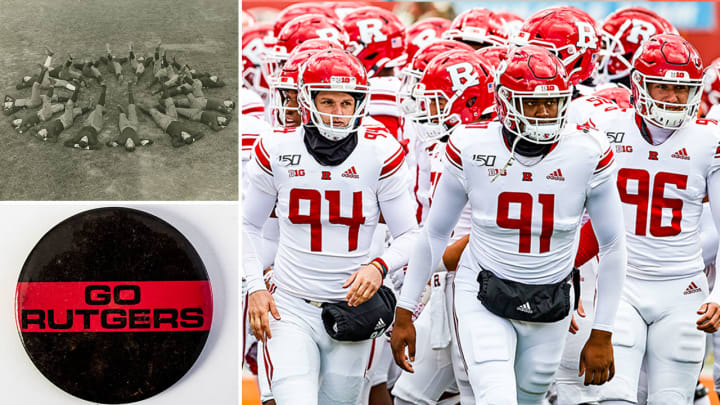

Late in the second act of the 1947 Broadway musical High Button Shoes, the masterly Phil Silvers, playing a con man named Harrison Floy, sings, “Nobody Ever Died for Dear Old Rutgers.” The lyrics include: “Nobody ever died for dear old Rutgers/Strangely enough they simply want to live.” After a locker room chorus chimes in, Silver adds, “When the coach says, ‘Smash the Princeton line’/His reasoning is fine/But it’s no good for your spine.”
Seven decades later, life imitates comedy.
For reasons more surmised than explained, two Rutgers players from this year’s team, the starting quarterback and the leading rusher and receiver, a team captain, asked to redshirt following a 52–0 loss at Michigan in late September that cost coach Chris Ash and his offensive coordinator their jobs. Artur Sitkowski the quarterback, and Raheem Blackshear, the running back, had no plans to die for dear old Rutgers in 2019. In the era of the Run Pass Option, the players took the Gee Thanks But I’ll Pass Option.
Rutgers was obliged to scramble, like its new quarterback. Nunzio Campanile, interim coach and de facto offensive coordinator, had just days to tweak the offense to better utilize Johnny Langan, a mobile third-stringer whom Campanile had coached to a state title at Bergen Catholic High in Oradell, N.J., two seasons earlier. (Sitkowski, a starter as a freshman in 2018, regained the job early in the second game of the 2019 season after McLane Carter, a graduate transfer, sustained a career-ending concussion.) Asked late last month how he had been able to adjust on the fly, Campanile quipped, “Obviously not very well.” Langan faced a significant hurdle. He was a redshirt freshman who had transferred to his state school after Boston College asked him to switch positions. The NCAA did not grant his eligibility waiver until 15 days before the start of the season, which deprived him of precious preseason reps. Rutgers lost to Maryland 48–7 in his debut. In his second start, at Indiana, a 35–0 defeat, he completed five of 13 passes for one yard, which, Campanile noted, is “almost impossible.” Equally as confounding to applied math majors: Langan recorded a worse passer rating the following week by completing nine of 19 for 48 yards and throwing three interceptions in a 42–7 home loss to Minnesota.
If Rutgers had known there were going to be seasons like this, it might never have invented the game of football.
Rutgers met Princeton on Nov. 6, 1869, in the first game, but hopes for a celebratory 150th anniversary season at “The Birthplace of College Football” are gone. Against Big Ten opposition, the team has looked like as if it couldn’t spell sesquicentennial if you spotted it the “s” and the “q.” Through six of their nine conference games, the Scarlet Knights have been shut out three times and outscored 245–24. (Since Rutgers joined the Big Ten five years ago, there have been 21 shutouts in intraconference games; Rutgers has been the victim in 10.) The remaining games are a gauntlet of Ohio State, Michigan State and Penn State. The block R on the Rutgers helmets should stand for Running Time. Rutgers is on pace for the most miserable season in conference history since 1981, when winless Northwestern was outscored 425–75 in nine Big Ten games.
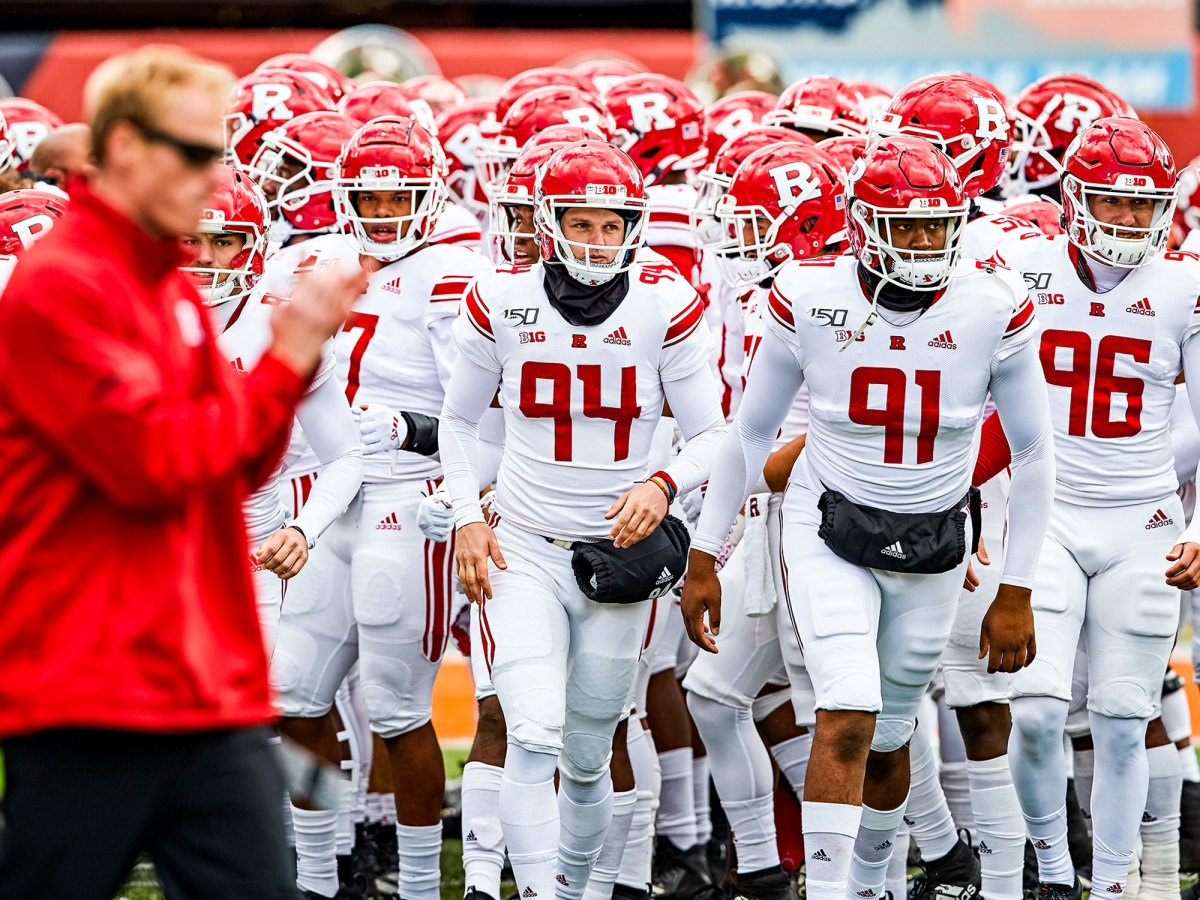
The Knights have bungled in ways small and large. Small: While a cut on Langan’s hand was being bandaged during the Indiana rout, Campanile inserted freshman quarterback Cole Snyder for one play, a handoff, instead of, say, calling a direct snap to a running back, thus burning one game in Cole’s redshirt year. Large: Athletic director Pat Hobbs, who through a school spokesman declined an interview request from SI, fired Ash and OC John McNulty after the fourth game. (Rutgers has had 11 offensive coordinators the past 10 seasons. Spinal Tap drummers had more job security.) If Hobbs had waited until the following week, Blackshear, at least, would have been ineligible to redshirt. Remarkably, Rutgers players have handled the key defections with comprehension, compassion and a shrug. “As a man you need to make decisions,” junior linebacker Tyshon Fogg, a defensive captain, says. “They are our brothers for a lifetime. We respect their decisions and support them 100 percent.” Neither Sitkowski nor Blackshear has discussed his redshirting publicly. Both are still practicing with the team.
Says Campanile of redshirting, “Our players grew up in a little different world than maybe I did. They’re a little more O.K. with it than I would have been as a player. I don’t agree with [Sitkowski’s and Blackshear’s] decision, but I support that they have the [the right to make the] decision. Players need rights. Whatever the consequences are, they’ll live with them.”
So outlined against gray-blue skies, the Four Horsemen ride again. In Rutgers Big Ten lore they are known as Listless Offense, Lopsided Losses, Opt-Outs and Dwindling Attendance. The announced crowd of 26,429 against then 20th-ranked Minnesota—in 54,454-seat capacity SHI Stadium—was the smallest in 14 years. For the final nonconference game one week later, officially 23,058 watched a 44–34 win over Liberty as the combative Langan ran riot, rushing for 118 yards and completing 15 of 21 passes for 192 yards and two touchdowns. The victory over a school in its first year as a fulltime FBS member offered a timeout from the harsh noise surrounding the team. “Jersey’s Jersey,” defensive end Mike Tverdov said after the win. “Somebody’s always going to have something to say.”
You might assume a team that is 2–7 and has lost 20 straight against Power 5 opponents is the football apocalypse. You would be wrong. While two of its leading players have punted on the season, a 22-year-old redshirt junior continues to punt. He might be the best punter in the country. He might be an All-America. In the topsy-turvy world of Rutgers football, the All-America hopeful is Australian. Of course.
The Midwestern-nice ribbing at Iowa’s Kinnick Stadium on Sept. 7 came late, a tribute more than a jab aimed at visiting number 94. After previous punts had pinned the Hawkeyes at their eight-, eleven-, and five-yard lines, a fan hollered, “Let’s see you put one at the one.” Adam Korsak obliged, hitting a 69-yarder that flatlined at the goal. When Korsak trotted back to the sideline, the fan shouted, “Good job. Now let me see you do it again.” Korsak failed—after a fashion. His next punt pinned Iowa at the two. “Not good enough,” the fan kibitzed. “You have to put it at the one.”
Korsak had a net average of 47.6 yards that day, booting 10 times in a 30–0 loss. The joy of being a Rutgers punter: You will not lack practice.
Like any punter, Korsak is on the team but truly not of it. He doesn’t have smash-the-line-and-wreck-your-spine responsibilities, though he does recall shoving a Buffalo player out of bounds after a 28-yard return last season. This was odd, not because the 6'1", 184-pound Korsak is timid but because his punts are the place where footballs go to die. He has punted 53 times in 2019, tied for third-most in the nation; those kicks have been returned a total of 87 yards. He has pinned 25 punts inside the 20, including seven inside the 10 and seven inside the five. He has had only one touchback. “Obviously you want the offense to be out there doing their thing,” says Korsak, who has a 44.6 net average. “But when my number is called, this is what I came here to do. You have to balance your emotions.”
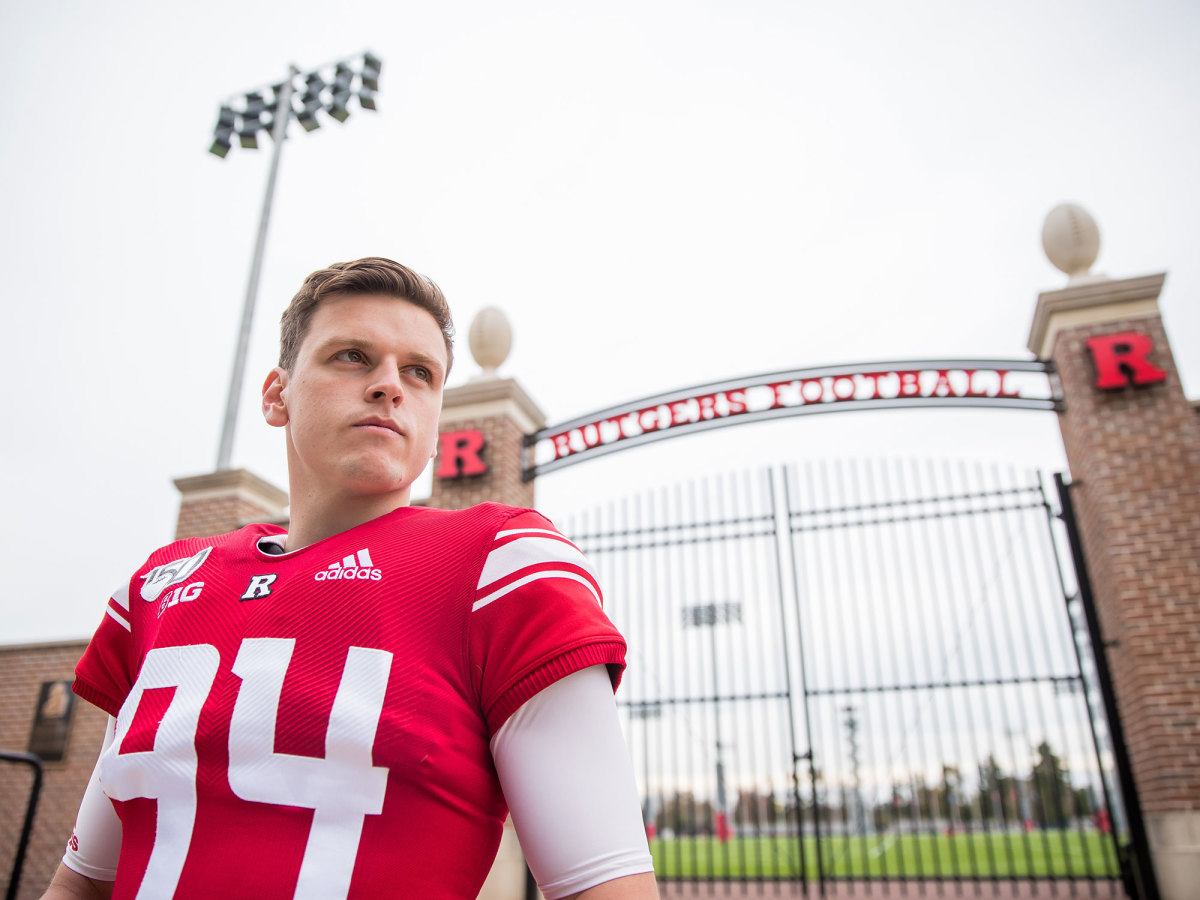
The outraged punting cognoscenti in Iowa City did not. After Korsak’s punt-a-palooza failed to earn him Big Ten special teams player of the week recognition—Ohio State’s punter won—Iowa fans took to social media to vent about the snub. The next day Korsak earned the weekly Ray Guy Award, which is determined by popular vote. He has won it three times in 2019.
“He’s like a sniper, pinpoint accuracy,” Campanile says. “I coached the returners last year so I got to stand back there and watch the spin of the ball and I’d be thinking I wouldn’t want to have to return it.”
Korsak is part of the invasive species, booter australis, that has overrun the undergraduate punting landscape; more than 47 Australian kickers are on FBS scholarships this season. Like many of his talented countrymen, Korsak can summon four punts:
1. The go-to rollout drop punt, in which he takes the long snap from Billy Taylor, rolls to his right and gets the ball away in less than the two-second-from-snap-to-kick industry standard. (“He’s 1.9,” Taylor says, “but he can get it off in the 1.6s when he’s rushed.”)
2. The spiral, which Aussies call the torpedo, a majestic punt you see on any given Sunday.
3. The snap kick, which starts to the right and works back to the left, the ball spinning on its side instead of up and down.
4. The banana, a snap kick that starts left and veers right. Korsak doesn’t punt a football as much as he walks it on a leash.
Like American kids who grew up throwing playing catch with their dads, Korsak grew up in suburban Melbourne kicking an Australian Football League ball with his father, Steve, a policeman. Korsak did not have the strongest leg but clearly was a natural, gaining an invitation to the ultimate special teams football factory, Prokick Australia. He was as diligent at developing his craft as he is at everything. While training to kick American pigskin, he also worked as a lifeguard, studied management at the University of Victoria and played Aussie Rules. Idle feet are the devil’s workshop.
Korsak twice had toured the U.S. with Prokick Australia, which showcases punters and placekickers while exposing them to enormity of what Dan Jenkins once labeled Saturday’s America. SHI Stadium was the first stadium he entered, and apparently you don’t forget your first love in football, either. He checked schools in other conferences, but Rutgers seemed like the best fit. He knew the Big Ten was not one of those track-meet leagues that didn’t value punts. He saw a promising future as Ash’s teams had improved from 2–10 to 4–8 the previous two years. When Korsak arrived at New Brunswick in 2018, he could not envision a game of football snakes and ladders to the 1–11 and 2-7 records that would thrust its punt team to the fore.
In the context of a troubled season, a Rutgers All-America, Campanile says, “would be wild.” Of course a consensus Rutgers All-America in any year is wild. There have been just four, one fewer than Alabama had in 2018. The most recent was tight end Marco Battaglia in 1995. Alex Kroll was the All-America center in 1961. Homer Hazel, then in his late 20s, was an All-America at end in 1923 and at fullback in ’24. And Paul Robeson, singer and actor and activist, was an All-America end in 1917 and ’18. He also was the Class of 1919 valedictorian.
Korsak, eligible to graduate next spring, majors in labor relations with a minor in creative writing. He has been writing as a hobby since his teens, mostly transgressive fiction, a genre that focuses on taboos and those who break social norms in illicit and often violent ways. Think American Psycho. Think Fight Club. This is shudder-inducing stuff, even darker than facing Ohio State with half a dozen freshmen starters on offense. “The genre is not super popular because it’s, you know, very triggering in some respects,” Korsak says.
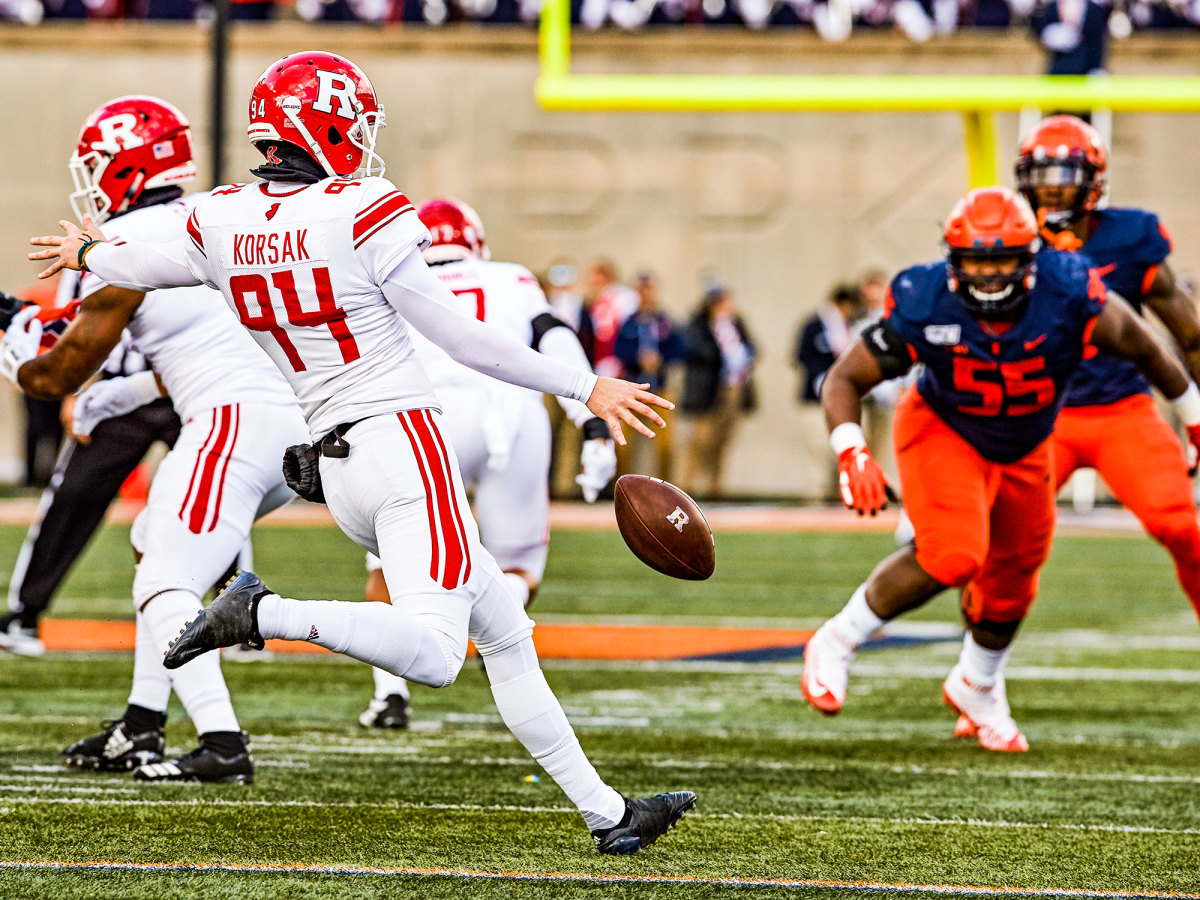
So if you were going to write creatively about 2019 Rutgers the story would be . . .
“It’d be an inside look at the locker room and 110 guys who are honestly some of the greatest friends I’ll ever have. I’m from another culture. They’ve done everything to welcome me from Day 1. It’s never been a chore to come here. I enjoy every day.”
On a sun-dappled Indian summer afternoon, three students from GlobeMed at Rutgers are manning an information table on College Avenue in a pre-Halloween effort to focus campus awareness on sexual health and binge drinking prevention. Periodically one offers a carny-barker cry, “Free candy, free condoms, free football tickets!” As millennial come-ons go, this is A-plus material. John Davis, a sophomore, drifts over. He reaches into a basket containing the tickets.
“Who we playing?”
“Liberty.”
He drops them and dips into a basket to his right, pocketing two red-wrapped LifeStyles condoms. He starts to walk away.
Why condoms and not tickets?
“Because I need condoms.” Davis pauses. “LifeStyles are great!”
This is where the rubbers meet the road. A moment of truth for Rutgers football is imminent: The next coaching hire will determine whether a moribund program will rise or whether the Scarlet Knights will continue to play their assigned Big Ten East role as destiny’s doormat.
If the past is prologue, Rutgers football can turn. Greg Schiano needed five excruciating years in the Big East—his early seasons included ritual wedgies by West Virginia and Miami—but ultimately he made the program respectable and often a little more. There was a Thursday night upset over then third-ranked Louisville in 2006, when the Empire State Building glowed scarlet in honor of the school down the Turnpike. Toughness. Accountability. Rutgers would play in six bowl games in a seven-year stretch under Schiano, and nine in 10 years. Now these were not your sweet-smellers like the Rose or your fabrics like the Cotton or your comestibles like the Sugar or Peach unless, of course, you count the PapaJohns.Com. Rutgers played in a Texas Bowl. A Quick Lane. The International. A couple of Pinstripes. The trophy cases at the football complex do not groan under the weight of the hardware. One trophy honors Rutgers as “runner-up” to Arizona State in the 2005 Insight Bowl.
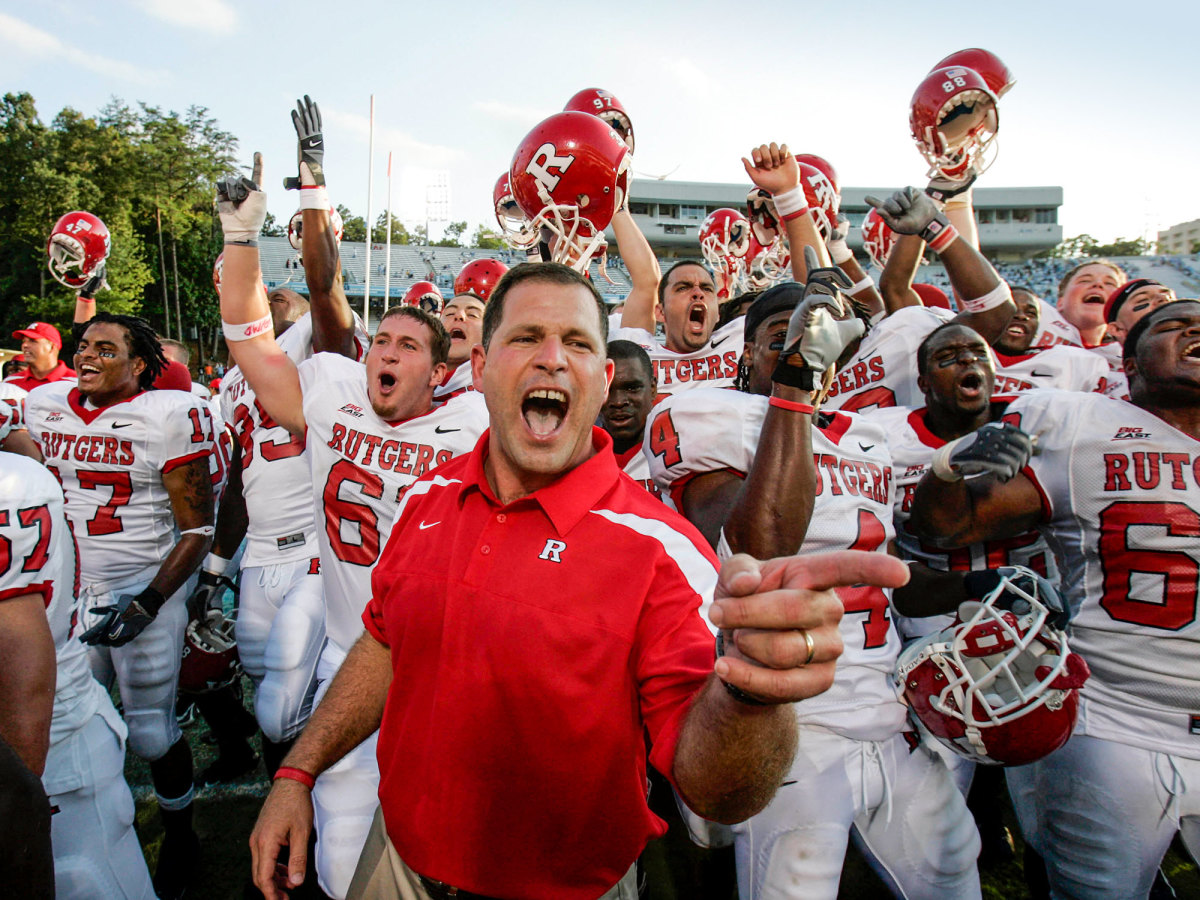
There is public sentiment to repatriate Schiano, who resigned from a job he really hadn’t started last spring as Patriots defensive coordinator. The 53-year-old Schiano is a Jersey guy, and no place is quite as tribal as New Jersey. “If you’re not from Jersey, you don’t get it,” says Bill Grieg, a 1978 Rutgers graduate and Schiano backer who was tailgating before the Liberty game in the Olde Queens Island tent. “We have a certain attitude, a certain cynicism, a certain sarcasm. But it’s all meant in a good way.” Right. Unofficial state motto: Jersey. You got a problem with that?
Hobbs has hired a search firm to help, not the same one that helped identify Ash, the square-jawed former Ohio State defensive coordinator who never quite fit. In an effort to keep national powerhouses from cherry picking its considerable high school talent, Schiano labeled New Jersey “the State of Rutgers.” In three-plus seasons under Ash, the slogan was the less bold “Fence the Garden,” a nod to New Jersey’s official motto, the Garden State. (Rutgers could have borrowed from Voltaire’s Candide and chosen to “Tend Your Own Garden,” but it’s recruiting linemen, not French scholars.) Rutgers has developed homegrown players into NFL talents—the McCourty twins and Mohamed Sanu in New England are three—but often the best players from the region wriggle out of its grasp. Giants running back Saquon Barkley was a Rutgers commit before switching to Penn State. Heisman-caliber running back Jonathan Taylor was headed there before flipping to Wisconsin. Stevie Scott, from upstate New York, changed his mind and ditched New Brunswick for Indiana, running for 164 yards against them last month.
“Our fans want change,” Campanile says. “Well, they’ve already gotten change [with Ash’s firing.] They’ll get more change. So to me, they should just support our players, make sure they’re appreciated for what they’re doing despite the results. They’re the ones trying to fight out of this.”
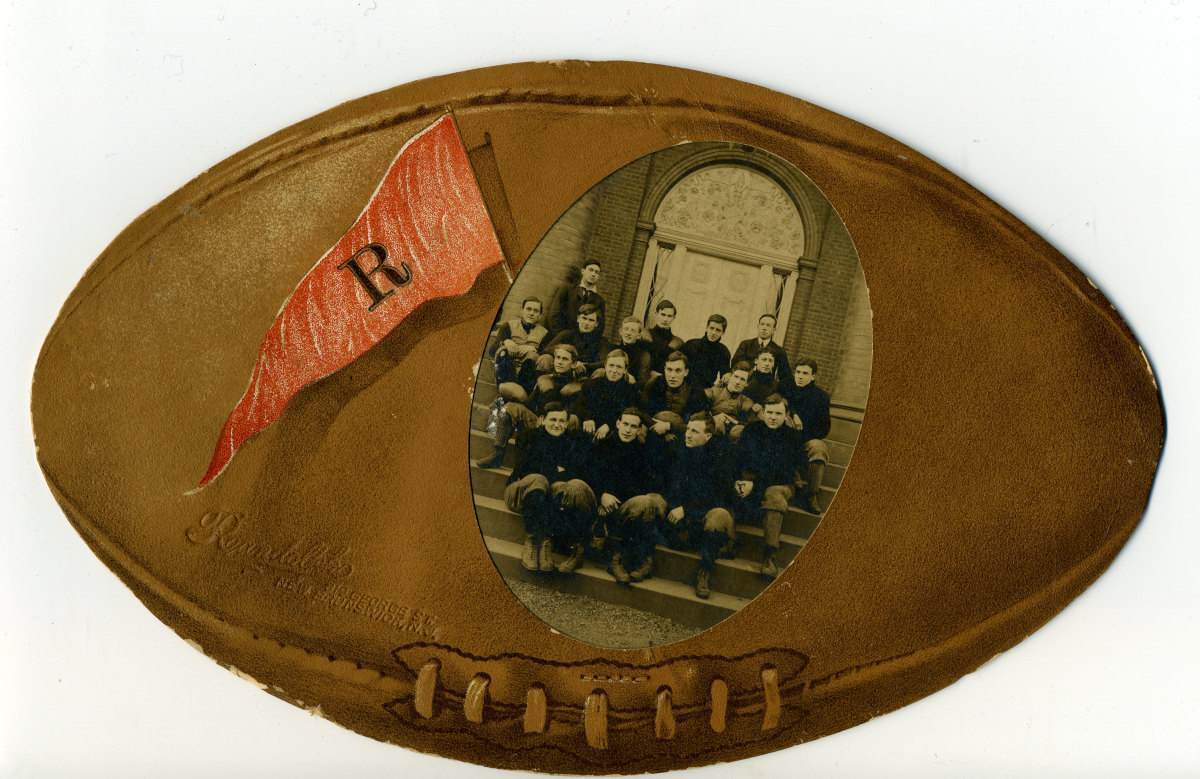
If the 150th anniversary celebrations were lower key, someone would have to check for a pulse. Rutgers didn’t schedule a home game for the weekend, playing instead at Illinois, a 38-10 loss. On Nov. 6 the bell that Col. Henry Rutgers donated to the university in 1826 was to be rung, as it is on special occasions. That day a plaque also was set to be unveiled at the site where Rutgers, still smarting from a 40–2 loss to Princeton in baseball in 1866, met “the men of Nassau Hall” in a 25-a-side game played with rugby-like rules. The players with scarlet scarves on their heads won 6–4, on ground that was mere steps from where a soph would score free condoms a century and a half later.
Rutgers football history is on display in the Special Collections and University Archives, located in the basement of Alexander Library. The exhibition is compact and compelling. There are pictures from the wild upset of Louisville. There is a plate commemorating the 1961 undefeated team, which dispatched Princeton, Connecticut, Bucknell, Lehigh, Penn, Lafayette, Delaware, Colgate and Columbia, a schedule that suited what was then basically a faux Ivy. There is a diamond-shaped paper badge from Nov. 8, 1902, that exhorts Rutgers to “Beat N.Y.U.” There is a ticket from a 1916 game when Rutgers caved to demands from visiting Washington and Lee and didn’t dress Robeson because he was black. There are ghosts in those glass cases, ephemera from a time when the notion of dying for dear old alma mater did not seem ludicrous. Christie Lutz, a New Jersey regional studies librarian who works at the archives, said that since the exhibition opened on Oct. 18, it has drawn one visitor per day.
